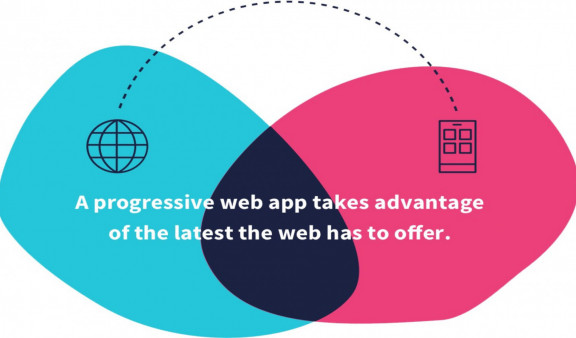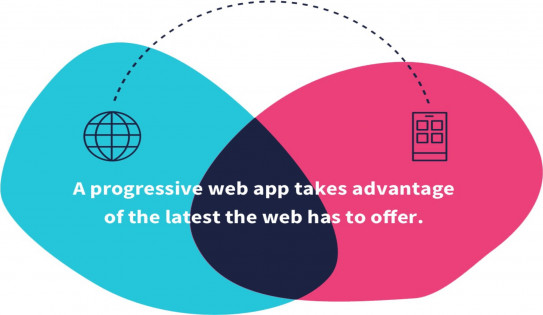
PWAs: out to make a real impression in 2020
We all know that first impressions count. But did you know that our brains take just a tenth of a second to decide whether a person is attractive and trustworthy?
According to Princeton psychologists Janine Willis and Alexander Todorov who conducted a series of experiments on the subject, we respond so quickly to faces that our reasoning minds may not even have time to influence the reaction.
Astonishingly, we view websites in much the same way. Research carried out by google found we take just 50 milliseconds to form an opinion about a website and whether we will stay on it or leave.
It’s no wonder then that digital retailers are constantly looking around for the latest trends to ensure they stay on top of the game, keep customers on their site for as long as possible – and of course, encourage them to come back.
If you’re an ecommerce brand hoping to make a good first impression with your customers and haven’t heard of PWAs (Progressive Web Apps) before, you’re going to start to hear a whole lot more about them.
What’s all the fuss about?
While PWAs are by no means a new thing, they are picking up pace and likely to be one of the biggest ecommerce trends of the year.
PWAs take the best parts of native apps and the web, to deliver much faster and engaging mobile experiences for consumers.
Redbox’s head of creative, Paul Lewis, explains: “PWAs are becoming a real driver in online retailing. Even six months ago they were feeling too fresh.
“Now they are a great option for retailers looking to improve their mobile strategy.
“The newest sites are already incorporating the technology providing a certain speed, look and efficiency for a clean and contemporary user experience.
“We are expecting PWAs to become far more common place this year.”
Tell me more?
Global online sales were due to reach $3.5 trillion last year – and are expected to rise to $6.5 trillion by 2022.
The UK’s ecommerce market is expected to grow nearly 10 per cent in the next three years.
But look beneath the surface of these figures and one thing is evident: mobile is on the march.
According to research by Adobe, $3 out of every $4 during the November and December holidays (Black Friday, Thanksgiving and Christmas) in the US came from smart phones. Americans were in line to spend $14billion more on mobiles during the 2019 holiday season than the previous year – a rise of 14.1 per cent.
Research from JP Morgan found a similar story in the UK and the EU, expecting mobile commerce to expand 20 per cent from 2018 to 2021 to become a £209 billion market.
Today’s tech savvy consumers come attached to their smart phone, are just as likely to shop online as in-store and have growing expectations about the speed and ease of how and where they interact with online stores and brands.
This is where PWAs are helping to transform the mobile experience for users and enabling retailers to better manage their omnichannel approach at the same time.

How do PWAs work?
To use an every-day native app, a consumer must visit an app store or go to a developer’s site and download the app on to their phone. Often, they may only decide to download the brand’s app while visiting their website, meaning they must leave the website to go to the app store to download it, which in itself can lose customers along the journey.
But downloading and using an online retailer’s app is a commitment to the user, sometimes costing money and taking up a lot of data for something a consumer may be unsure about even using again.
If you have ever clicked on a ‘add to home screen’ banner while browsing a website, you are installing an PWA in the background of your phone. The app delivers a super quick experience for the user – even when offline. The ability to be able to use them offline to browse pages is seen as a game-changer. There is also the potential to incorporate features that were only previously available to native applications, such as push notifications.
PWAs use existing technology based on languages such as HTML and Javascript and work through ‘service workers’ - small files stored on the user’s device acting as a bridge between the server and user. The service workers pre-cache parts of the web app so that it loads instantly the next time a user opens it which enables offline use until the user is online again. For apps that don’t need timely information, people can look up things and search the app without being connected to the internet.
Why PWAs are here to stay
Speed. Have we mentioned how fast they are? According to google research 53 per cent of mobile site visitors will leave a page that takes longer than three seconds to load. PWAs cache the data meaning starting an app again becomes lightning quick, helping with conversion rates. In fact, they can be up to 10 times faster than a mobile site. With slow internet speeds in many countries around the world, PWAs are another way of helping bring apps and brands to mobile users who would otherwise struggle to use them.
Less commitment. PWAs work on all devices and don’t need to be upgraded or installed. For many consumers who rarely go to the app store or don’t like to download apps, it is the perfect way to reach them still.
Engaging. Like a native app, PWAs allow online retailers to send push notifications to help drive engagement with users, without being too in their face. They feel and behave like a native app, having access to a device’s functionalities so the experience still feels integrated.
Next steps?
With PWA Studio in Magento Commerce, online retailers can transform the mobile experience for its customers. PWAs can help brands reach more customers, improve search rankings and conversion rates, and through responsive design strategies load content quickly across smartphones, desktops and tablets on any network.
If your company already has a native app, you will need to decide if it’s worthwhile maintaining this, or whether it is better to have both in order to engage fully with both loyal customers and those who are more sporadic or coming to you for the first time. You can also launch a PWA with just a few features – adding more at a later date, meaning costs can be kept relatively low.
Redbox believes PWAs will be a key development for e-commerce businesses in 2020. If you are considering a PWA for your business and want to make the right first impression, give us a call and let us help plan your next steps.